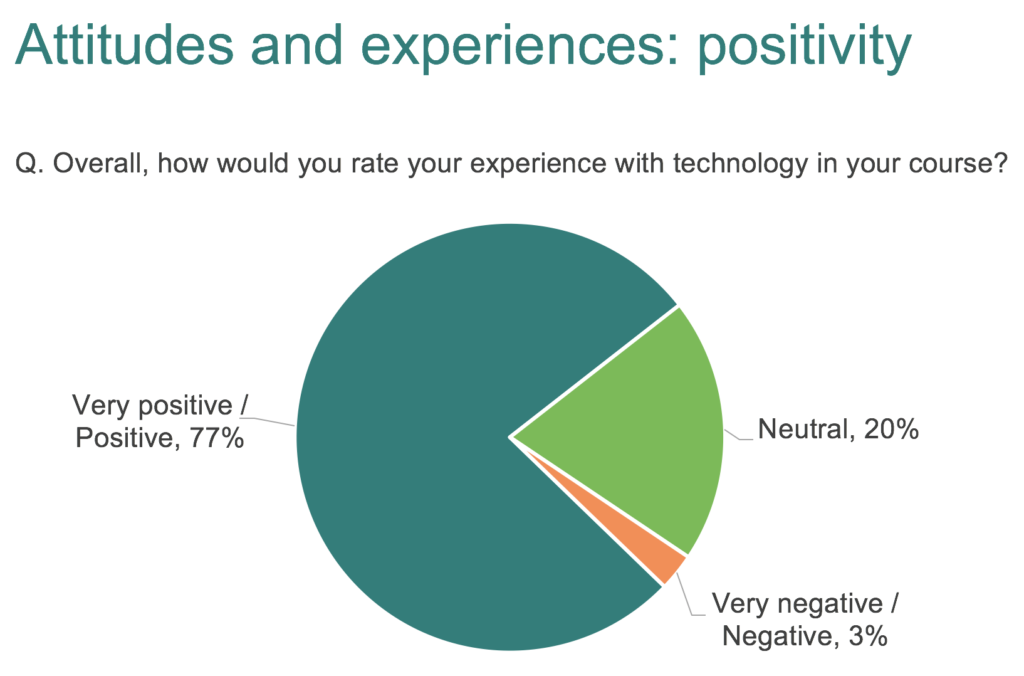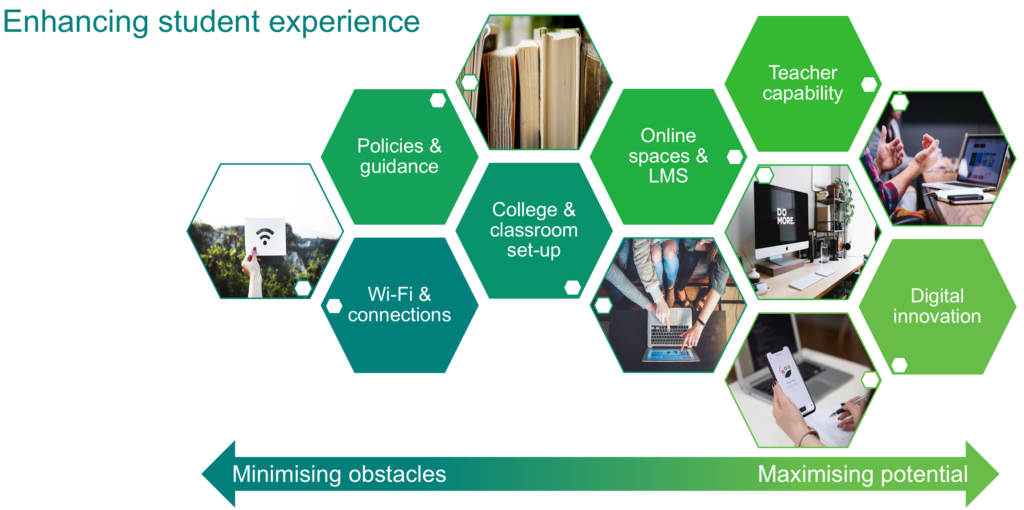
Global tech survey finds students take the initiative
From AI and VR to MOOCs and nanodegrees, EdTech promises to fundamentally change the way we teach and learn. But what’s happening right now in our colleges and campuses – and what do students actually want and expect?
Every two years, Navitas’ global Learning and Teaching team runs a Student Technology Survey to understand how technology is being used across the very different programs we run. We need to measure and benchmark our own progress, but also understand how student experiences, needs and expectations should shape our technology policies and enrich the way we teach.
This year was our first global view – analysing data from 7,240 students at 96 Navitas colleges in 26 countries. They speak over one hundred different languages, studying programs as diverse as a Master of Creative Industries, Academic English or a Diploma in IT. But what they do have in common is a very similar profile when it comes to accessing familiar technologies to enhance their learning.
Our students generally have a positive attitude towards integrating technology into learning. They have access to their own smartphones (93 per cent of respondents) and laptops (79 per cent of respondents), and they’re proactively using both in learning. They also increasingly expect education providers to offer contemporary, tech-enabled learning environments, and want their teachers to think about how they can best integrate technology appropriately into their approach.
Around 75 per cent feel their course uses the right amount of technology
Students were positive in describing their current experience with technology across all colleges, and agreed it helps them communicate, learn where and when they want, and learn in different ways. However, there is an opportunity to help them use technology to better organise and manage their learning – and ensure learning is personalised to their individual ability and context.
Given the rapid pace of change across every digital experience, we know it’s important to keep pushing what’s possible, even when students indicate that they’re happy with current provision. By co-creating solutions with students, we can find new ways to keep early adopters engaged, and support others who may be struggling with new learning technologies in their course.
Two-thirds are using their smartphone for learning
As far as students are concerned, the almost ubiquitous smartphone is ideal for watching or listening to learning materials (46 per cent) and despite its small size and the pitfalls of clumsy thumbs, is increasingly used for taking notes (37 per cent). They’ll also use it to manage group work, but are more likely to use their laptops for ‘productive’ work such as creating written work or presentations, or doing in-depth research.
Greater clarity over the use of personal devices could further improve this. 62 per cent of teachers told us they require or encourage the use of personal devices in the classroom in our 2016/17 teacher survey, although this year only 41 per cent of students thought that was the case.
In terms of accessibility, the biggest obstacle is more within the provider’s control: good WiFi. Whether that’s at home, on campus, or in other spaces where students gather to learn and collaborate, it’s the most essential resource for contemporary education.
And as the internet quality declines, so does the number of students reporting a positive technology experience. Only 47 per cent of those with ‘terrible’ WiFi reported a positive technology experience, compared with 90 per cent of those with ‘excellent’ internet quality.
Only 16 per cent communicate with teachers using online spaces
Whilst the research does not explore or reflect how much our online spaces are used for ‘functional’ academic tasks such as accessing materials and uploading assignments, it does show that email is still the default tool for communication, even if online communities are available.
Collaborative platforms can be an important tool for creating strong student connections, fostering peer support and meaningful relationships with teachers and fellow students. There may be opportunities to learn from the ways social media and messaging platforms optimise group discussions and engagement to improve the community spaces we provide.
40 per cent of students say nothing stops them from using technology
The need for tech support goes hand in hand with our increasing dependence on technology – but students are increasingly able to take the initiative and solve their own issues. They’re just as likely to Google the answer as ask their teacher, and more likely to ask their friends or classmates for help before turning to the IT helpdesk.
While almost half of students feel there are no barriers to their use of technology, those who do have issues most commonly cite slow or no internet access (28 per cent), and a fear it might go wrong or break (12 per cent). Given the preference for informal IT help, perhaps the early adopters can support the late majority and laggards – as long as a supporting learning community underpins their experience.
The detailed responses to our survey questions highlight just how engaged students are with the use of technology in learning – and we’ll continue to draw on their suggestions for improvement as we shape our future policies and platforms at Navitas.
Download the full report on our Learning & Teaching platform.





